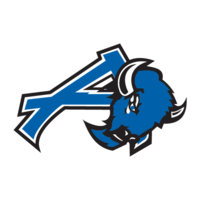Forecast high: -1ºC low: -10ºC
Total time away from school is 55 hours. Try to pack light as you must carry your own gear into the campsite, 1.1 km from the parking area down a dirt road.
Bedding: A sleeping bag with at least a -5 ºC rating is recommended. Add a fleece bag liner, sleep in warm dry clothes, with heavy wool socks. Use extra blankets if you don’t have a colder rated bag.
For a mattress I recommend a 2” thick ethafoam pad cut to your height. It will be light but bulky. Economical and will get you off the ground. I use a self-inflating Thermarest but I camp a lot. Self-inflating does not inflate well in the cold. I need to blow mine up, which is not ideal.
- Bring a set of clean, dry sleeping clothes. It is very important that you do not try to sleep in the clothes (even underwear) that you wore during the day. The moisture in them will chill you at night. I recommend fleece pajama pants and a long sleeved sweater or fleece plus warm socks.
- A toque is a must have item. You will need it for sleeping. Most heat is lost through your head and neck.
- I don’t recommend pillows – bulky and only one function. Instead bring a pillow slip. You can stuff it with clothes as a pillow; use it as a laundry bag in your pack out.
Clothing:
- a daily change of light underwear, at least one pair of long johns
- sweat pants are better than jeans –they dry faster if you get them wet.
- Yoga pants or “leggings” are only good as a base layer. The wind cuts through them and their tightness restricts circulation. Girls who wear leggings only are usually cold.
- A long sleeved top – I prefer a long –sleeved work shirt over t shirts to protect from sun,bugs and brush when I am outdoors. For winter, try flannel or insulated work shirt.
- Two pairs of heavy, warm socks. Daily pairs of light socks under those. You want to keep your feet dry.
- Outer jacket medium weight over a hoody might be best this time of year.
- A windbreaker outer jacket in case of wind or wet snow.
- You may want wind pants over your sweats. Snow pants might be too heavy.
- A toque.
- Mitts are warmest. Insulated work gloves are economical and probably warm enough. Nylon ski gloves don’t fare well around fires. I’ll be going with leather shells over knit wool mittens this time of year.
Wear most of your outer layers in the morning when we leave. It will lighten your pack and will likely be the coolest that morning.
Footwear:
- Forecast is no snow but partly cloudy. Winter boots are recommended- removable liners are best. Old running shoes will work for you in and around the range shack.
Personal items:
- Toothbrush, toothpaste, dental floss, washcloth, small towel.
- Hand sanitizer. Pit toilets are the facilities at the range and at camp.
- Feminine products as needed.
- Lip balm, sunscreen.
- Any personal medications. Epi pens etc.
- No mosquitoes in December!
A headlamp is highly recommended if you have one, a flashlight if you don’t. It gets pretty dark if you are used to electricity at night. Dark around 5 pm now until 7 am.
Wooden, strike anywhere matches. I bring extras if you forget these.
You do not need a knife but if you bring one, it must be pre-approved by me. 4” max single blade sheath knife. Multi-tools, Swiss Army knives, Leatherman are all OK.
Banned items:
- Cell phones, iPods, video games. Portable music devices. One of the goals of the camp is to go without these.
Mr. McKinnon has contact with the school and always carries the contact forms with him. The parent volunteers also carry phones.
- Cots, folding chairs, tents. We are trying to imitate a survival scenario as best we can.
Packing: a backpack is best. Athletic /duffel bags are good. Wheelie bags are not recommended – too heavy to carry, terrain not suitable for rolling.
Provided items:
First aid kit, tarps, twine, poles, firewood, axes, cooking grates.
Drinking water. City water. Bring your own wide-mouth water bottle and a heat proof mug.
Food:
We discussed this in detail in class. The meals list is below. Campers/groups must bring their own food. We also talked about ways to pack food without carrying a cooler. If you bring a cooler, that’s OK, but you may need to make extra trips to get your gear to camp.
Day 1: Bag lunch, Group meal #1 supper.
Day 2: Group meal #2 breakfast, Bag lunch, Group meal #3 supper.
Day 3: Group meal #4 breakfast, Bag lunch.
